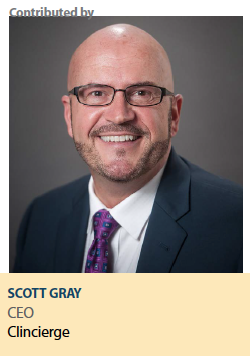 Increasing the diversity of patients enrolled in clinical trials of new medicines has become a growing theme for improving the clinical trial process. There is broad recognition that research participants need to be representative of the patient population who will ultimately use the product. Responses to medications can vary according to a variety of factors, including a patient’s age, sex, ethnicity, genetic background, and lifestyle. Moreover, the advent of personalized medicine is adding to the need for greater diversity in clinical trial enrollment. Effectively tailoring drug therapy to a patient’s particular disease status or genetic make-up depends on the ability of researchers to harvest a broad array of data during the drug’s clinical development.
Increasing the diversity of patients enrolled in clinical trials of new medicines has become a growing theme for improving the clinical trial process. There is broad recognition that research participants need to be representative of the patient population who will ultimately use the product. Responses to medications can vary according to a variety of factors, including a patient’s age, sex, ethnicity, genetic background, and lifestyle. Moreover, the advent of personalized medicine is adding to the need for greater diversity in clinical trial enrollment. Effectively tailoring drug therapy to a patient’s particular disease status or genetic make-up depends on the ability of researchers to harvest a broad array of data during the drug’s clinical development.
Unfortunately it is well known that minority populations, as well as demographic groups such as the elderly, females (in some cases), and pediatric patients, are often under-represented in clinical trials. For example, one study by researchers at the University of California, Davis found that non-white patients comprise fewer than 5% of participants in National Institutes of Health-supported clinical studies.
Such numbers are often even worse in clinical trials aimed at diseases where disproportionate members of minority populations are affected, such as heart disease and diabetes. As a result, the U.S. Food and Drug Administration has made recommendations aimed at increasing the diversity of populations in clinical trials, including identifying particular barriers to enrolling members of specific demographic groups and utilizing strategies to address such barriers.
Addressing Minority Patient Populations
Obstacles to minority group participation in clinical trials are many. Lower incomes, potential language barriers, and often less education can lead to less awareness and understanding of the opportunities presented by clinical trial participation, such as access to new treatment advances. Geographic distance from study centers and related travel costs can also greatly limit participation. This issue can be particularly acute in rare disease trials, as a high disease incidence may be concentrated in geographic areas far removed from the few research sites that study those conditions, necessitating that patients participating in trials must leave their homes, sometimes for extended periods of time.
Even in U.S. studies involving inner city patient recruitment, transportation and cost issues — such as parking fees, repeated time off work, and child care expenses — can be a significant barrier to minority participation in clinical trials, and alleviating such a significant equalizer for greater trial inclusivity.
Bridging the Gap
Many drug sponsors are today making specific efforts to address diversity as part of broader efforts to increase the patient centricity of their clinical development programs. Some of this is being accomplished by building strong relationships with patient advocacy groups, which can aid in getting the word out to patients and families dealing with a particular disease. Drug developers and clinical research organizations are also increasingly reaching out to specialist service providers like ourselves to address barriers to patient participation in clinical studies.
Assistance may include such basic elements as pre-payment and rapid reimbursement of costs for trial participants, managed transport, whether local, regional, or international, and housing where required. But also important is one-on-one assistance for patients and caregivers that is provided in their own language and with sensitivity to particular cultural issues or disease constraints. Patients in global trials may further require help with visa assistance and other international requirements for study participation. Drug sponsors and CROs that add such personalized elements to their clinical development programs are actively seeing gains, not only in terms of greater patient diversity, and higher enrollment and retention rates, but also in an improved ability to complete trials on time and budget with the greatest chances for success. (PV)











